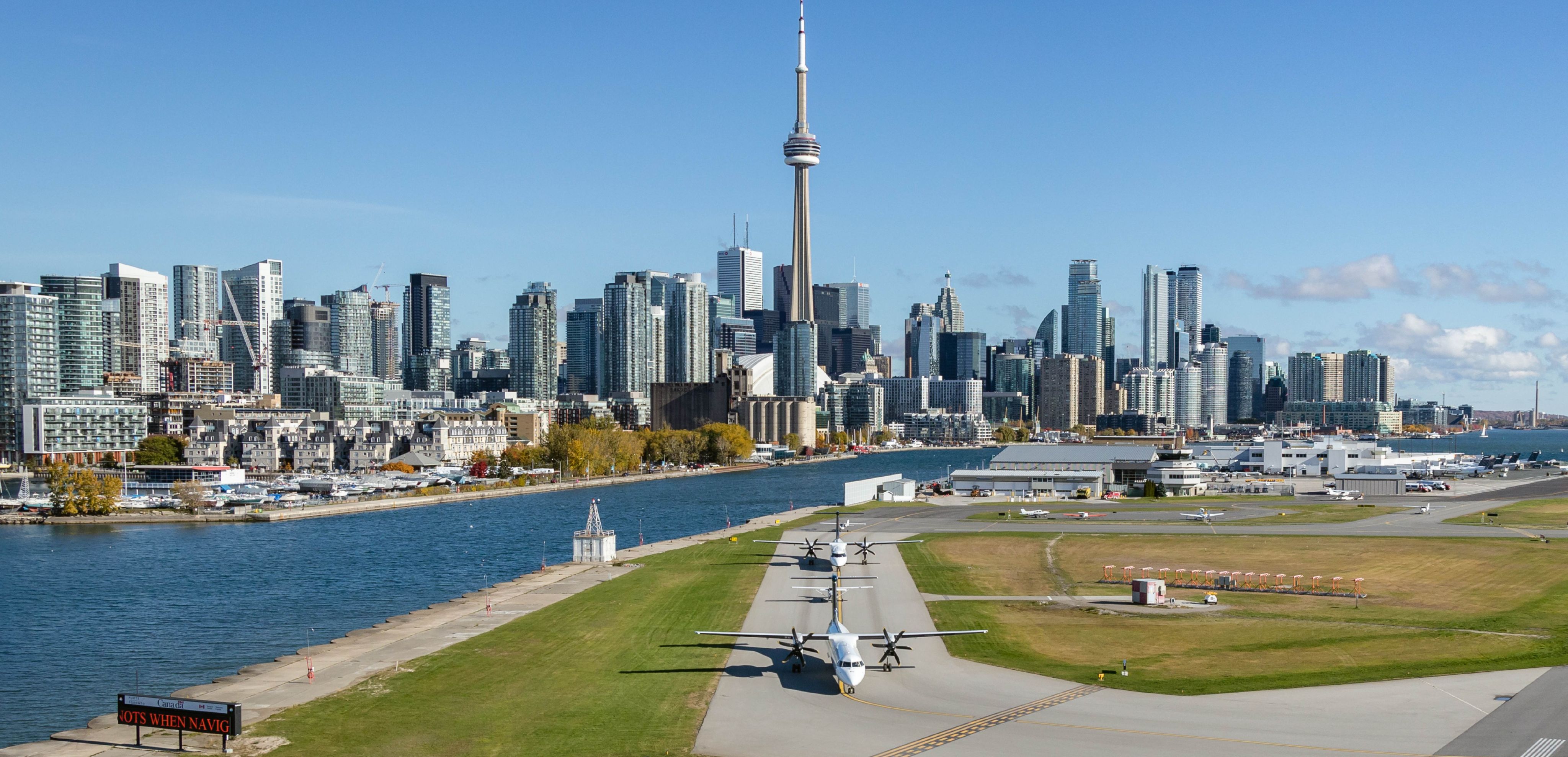➔ Canada’s EV battery plan is supercharged
➔ The electric-jet era takes off at Billy Bishop airport
➔ How to unsettle scientists
Hot takes
➔ Canada’s EV battery vision takes shape. Volkswagen’s Canadian battery arm PowerCo is pushing ahead with its St. Thomas, Ontario, gigafactory, with two construction contracts. The plant is slated to start production in 2027. But it’s more than a construction milestone, it’s a signal that Canada’s high-stakes bet on EV supply chains is materializing despite tariff skirmishes and uncertain demand. For Ottawa and Ontario, the real test will be whether it can give Canada a foothold in North America’s evolving battery supply chain.
➔ Energy ambitions clash with sustainability. Ontario’sproposal to connect Alberta and Saskatchewan oil and gas to refineries in Southern Ontario and tidewater ports, including a new deep-sea port on the James Bay coast, is facing Indigenous pushback. Their key concern: They feel “invisible.” The Indigenous Resource Network is also concerned they are seen as roadblocks to project development, when in fact “they are in fact part of the solution,” the IRN noted. This will be a recurring challenge as Canadian governments look to fast-track projects. Canada will need to get Indigenous groups on board to avoid project delays.
➔ Scientists are unsettled. The U.S. Department of Energy (DoE) stunned the climate academia world with a new report that suggested “CO2-induced warming might be less damaging economically than commonly believed.” Talk about unsettling the science community. Several websites including Nature and Carbon Brief have published pointed ripostes, but the new DoE report is challenging accepted wisdom on climate. Will the UN’s Intergovernmental Panel on Climate Change (IPCC) move swiftly with a rebuttal? Its next assessment report is not due till mid-2028.
Emissions, energy & economy: Assessing Canada’s latest mega project
Ksi Lisims LNG project is ready for its spotlight. The Indigenous-backed project is waiting for an environmental assessment (EA) order from the B.C. government that could potentially see the natural gas export project proceed. The province’s ministers of environment and parks and energy are set to decide by September 7.
Here’s how the project could impact Canada’s economy, emissions and energy:
Who’s behind it: The Nisga’a Nation, a self-governing First Nation on the Pacific Coast. Western LNG, backed by an affiliate of investment heavyweight Blackstone Inc., is a partner.
Location: Right next to the U.S. border on Pearse Island.
Timelines: The EA was expected by Q4 2024, so we are already playing catchup. The original application placed construction between Q2 of 2025 to Q4 of 2027, with operations beginning in 2028 (till at least 2058).
Project description: Two floating LNG facilities, each with liquefaction processing units. Once fully complete, the project will handle up to two billion cubic feet per day (bcfd) and export around 12 million tonnes per annum of LNG.
Who’s opposing it: The project faces opposition from several environmental groups and Indigenous groups, including the Gitanyow Hereditary Chiefs and Lax Kw’alaams Band.
Related infrastructure: An environmental certificate has been issued for the 780-kilometre Prince Rupert Gas Transmission (PRGT) project, which Nisga’a and Western bought from TC Energy in 2024. If PRGT rings a bell, that’s because it was the key conduit for the now-defunct Malaysian energy giant Petronas’s LNG project proposal back in 2014. It was approved even then, with amendments in July to address new environmental concerns.
What about the project’s emissions: The development expects to be net-zero ready by 2030, subject to an electricity agreement with BC Hydro. Project proponents say it would contribute 0.02% of B.C.’s emissions and 0.002% of total Canadian emissions.
Is that good?: The project claims to have a lower well-to-port emissions intensity compared to U.S. Gulf Coast projects (0.76–1.19 tonne of carbon/tonne of LNG lower). At full production, Ksi Lisims LNG would emit 9–14 million tonnes less CO2e per year than a U.S. Gulf Coast terminal project.
Cool (your) jets

Is this the future of electric aviation?
RBC Thought Leadership’s Energy lead Shaz Merwat was on the Billy Bishop Toronto City Airport runway last week as Beta Technologies Alia CX300 rolled out an all-electric aircraft. The conventional takeoff/landing aircraft can be configured either as a passenger or cargo aircraft. Here are some cool specs:
-
Passenger capacity: 5 passengers
-
Cargo capacity: 1,250 lbs. of cargo
-
Maximum demonstrated range: 336 nautical miles (i.e., Toronto to Sarnia, or Calgary to Okanagan region)
-
Max speed: 280 km/hour (Cessna 172 can top 344 km/hour)
-
Charge Time: <1 hour
-
Energy cost: $18 per hour of flight time (Cessna 208: $347 per hour)
-
Emissions: At least 75% less emissions than a conventional small aircraft
-
Uses: Short-haul cargo and corporate travel
The CX300 photographed above is the cargo variant, and fourth off the production line with final delivery to Air New Zealand. The carrier will use the aircraft for regional cargo routes.
Billy Bishop is arguably already one of North America’s most sustainable airports, and is on a path to fully electrifying its vehicle fleet, including shuttle buses, ground vehicles, towing, etc.
To learn more about decarbonizing aviation, listen to the episode of RBC’s Disruptors Podcast on the topic with Angela Avery, Executive Vice President, Chief People, Corporate & Sustainability Officer at WestJet Group and Geoff Tauvette, Executive Director at the Canadian Council for Sustainable Aviation Fuels (C-SAF).
Trends, tech and science
Canada’s turning its chill into an advantage. Ottawa recently injected $2.5 million in TerraFixing’s direct air capture (DAC) tech—aimed at extracting CO₂ in remote, wintry zones where low temperatures actually enhance efficiency. It’s an inventive way to turn Canadian winters into an advantage. If TerraFixing can prove cold-weather DAC works at scale, it could give Canada an edge in the global carbon-capture arms race.
A new “cli-fi” take on extreme weather. Sarah Hall’s Helm, is the latest novel in the new climate fiction genre that blends “atmospheric principles” with folktales to paint a picture of humans’ relationship with nature. Meanwhile, eco-warrior Bill McKibben, who once wrote a book with the grim The End of Nature title, returns with a surprisingly upbeat Here Comes the Sun: A Last Chance for the Climate and a Fresh Chance for Civilization.
Curated by Yadullah Hussain, Managing Editor, RBC Climate Action Institute.
Climate Crunch would not be possible without John Stackhouse, Sarah Pendrith, Jordan Brennan, John Intini, Farhad Panahov, Lisa Ashton, Shaz Merwat, Vivan Sorab, Caprice Biasoni and Lavanya Kaleeswaran.
Have a comment, commendation, or umm, criticism? Write to me here (yadullahhussain@rbc.com)
Climate Crunch Newsletter
This article is intended as general information only and is not to be relied upon as constituting legal, financial or other professional advice. The reader is solely liable for any use of the information contained in this document and Royal Bank of Canada (“RBC”) nor any of its affiliates nor any of their respective directors, officers, employees or agents shall be held responsible for any direct or indirect damages arising from the use of this document by the reader. A professional advisor should be consulted regarding your specific situation. Information presented is believed to be factual and up-to-date but we do not guarantee its accuracy and it should not be regarded as a complete analysis of the subjects discussed. All expressions of opinion reflect the judgment of the authors as of the date of publication and are subject to change. No endorsement of any third parties or their advice, opinions, information, products or services is expressly given or implied by Royal Bank of Canada or any of its affiliates.
This document may contain forward-looking statements within the meaning of certain securities laws, which are subject to RBC’s caution regarding forward-looking statements. ESG (including climate) metrics, data and other information contained on this website are or may be based on assumptions, estimates and judgements. For cautionary statements relating to the information on this website, refer to the “Caution regarding forward-looking statements” and the “Important notice regarding this document” sections in our latest climate report or sustainability report, available at: https://www.rbc.com/our-impact/sustainability-reporting/index.html. Except as required by law, none of RBC nor any of its affiliates undertake to update any information in this document.


